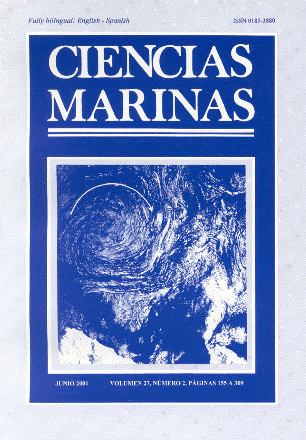Stable isotope paleoenvironmental record of a coral from Cabo Pulmo, entrance to the Gulf of california, mexico
Main Article Content
Abstract
A 17-year-long record of δ18O and δ13C from a Cabo Pulmo coral (Pavona gigantea) was analyzed. Although the coral δ18O signal is mainly temperature controlled (~70%), the seasonal arrival of surface water masses to the Gulf of California produces an isotopic effect in the opposite direction to that produced by temperature. During summer and fall, the arrival of Equatorial water effectively reduces the annual range in the δ18O of the coral skeletons by increasing the δ18O value of water, even though this occurs during the rainy season. The incursion of Equatorial water masses to the entrance of the Gulf of California during El Niño years is so strong that even during the strongest ENSO years there is no important isotopic shift in the skeleton, even though temperature records show significant positive temperature anomaly in the region. The same effect occurs for La Niña years, but in the opposite direction. By deconvoluting the temperature signal from the isotopic record, the seasonal interplay of the water masses from the California Current and the Costa Rica Coastal Current can be effectively deduced. Changes in the coral δ13C seem to coincide with periods of upwelling events in the gulf, with the highest value coinciding with the annual maximum in pigment concentration for the region.
Downloads
Article Details
This is an open access article distributed under a Creative Commons Attribution 4.0 License, which allows you to share and adapt the work, as long as you give appropriate credit to the original author(s) and the source, provide a link to the Creative Commons license, and indicate if changes were made. Figures, tables and other elements in the article are included in the article’s CC BY 4.0 license, unless otherwise indicated. The journal title is protected by copyrights and not subject to this license. Full license deed can be viewed here.

